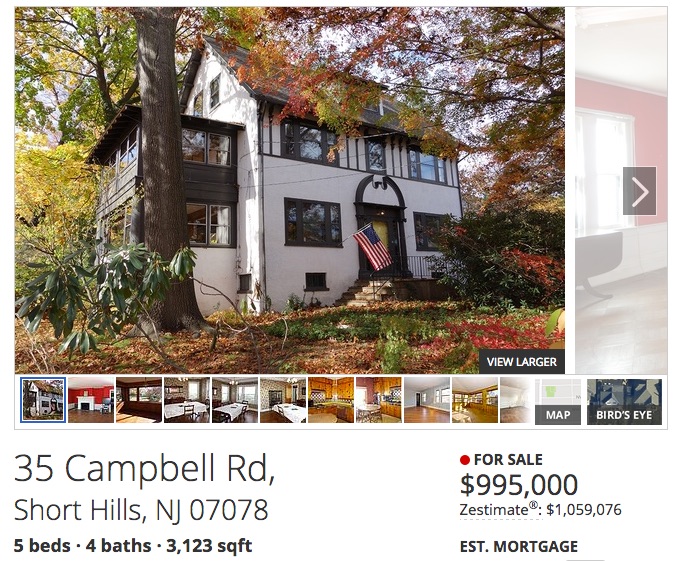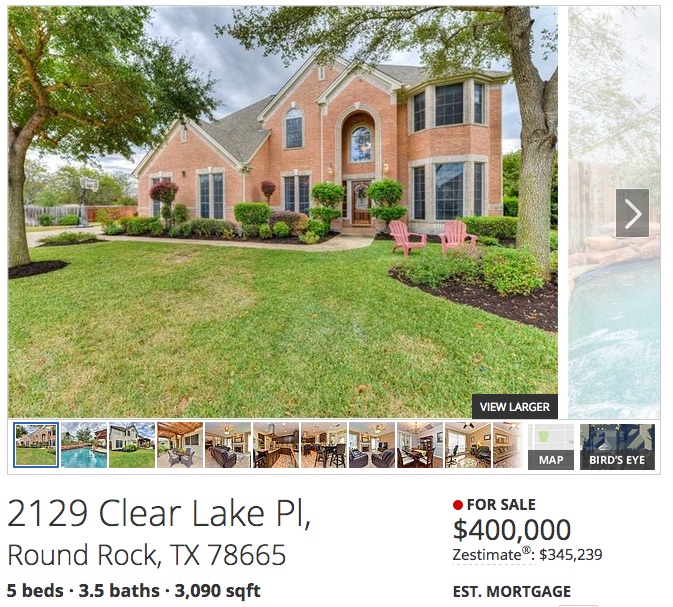
With Thanksgiving around the corner, I thought it might be fun to do some Big Picture Thinking, rather than overly earnest calls for reform that go silently into that dark night. One amazing story I saw recently deserves some of that Big Picture Futurism treatment. From the Massachusetts Institute of Technology, with the headline, “Homeschooled with MIT courses at 5, accepted to MIT at 15”:
Ahaan Rungta and his family moved from Calcutta, India, to Fort Lauderdale, Florida, in 2001, the same year MIT announced OpenCourseWare (OCW), a bold plan to publish all of MIT’s course materials online and to share them with the world for free. Little did his parents realize at the time that their two-year-old son — already an avid reader — would eventually acquire his entire elementary and secondary education from OpenCourseWare and MITx, and would be admitted to the MIT class of 2019 at the age of 15.
Holy $&@*%! Considering that MIT has an admission rate of 7.9%, which is higher simply because a whole lot of super smart kids don’t even bother applying as MIT is a heavy duty STEM as opposed to the Ivy League or similar caliber schools, it’s absolutely mindboggling that a kid who should be thinking about junior year in high school will be starting freshman year at MIT.
The implications are enormous for society, and when there are enormous societal implications, there are enormous real estate implications.
The Rise of Online Education
The news story out of MIT touts its online education platform: OpenCourseWare and MITx. What’s available from MIT over the Web, as revealed in snippets, is simply astonishing: Linear algebra, solid state chemistry are two courses mentioned.
But MIT is hardly alone in the online education space. In 2011, Washington Post published a story called “The Rise of Online Education” in which the writer noted that some 4 million students in K-12 took a course online, and projected that 50% of all high school students would by 2019. Khan Academy is frequently mentioned in articles discussing online education, and it has surpassed 10 million students. World-class professors, like Sebastian Thrun of Stanford, have embraced online education. And of course, we’ve all been bombarded with commercials and ads from for-profit, mostly online schools like University of Phoenix and others.
The point is that online education is on the rise. Most of the focus to date has been on college, but once in a while, you have stories like Ahaan Rungta where K-12 students are taking advantage of the Web for education.
Now, combine that with the rise of homeschooling:
Reliable nationwide numbers are difficult to obtain, but the National Center for Education Statisticsestimates that from 1999 to 2003 the number of home-schooled children increased from around 850,000 to roughly 1.1 million, a 29 percent jump in four years. Movement leaders suggest even higher estimates of around 2 to 2.5 million children currently being home schooled. Some states keep their own figures. Virginia had 3,816 registered home schoolers in 1990. By 2007 the number had grown to 20,694. Maryland saw similar growth, from 2,296 in 1990 to 24,227 in 2006.
Homeschooling has long been the province of fairly strict religious families who did not want their children exposed to “immorality” in the public schools. But that’s changing fast too:
Survey research has revealed a heterogeneous population of home schoolers and higher rates of minority home schooling than expected. Economist Guillermo Montes’s analysis of data from the massive 2001 National Household Education Survey found that 70 percent of respondents cited a nonreligious reason as the top motivator in their decision to home school. Home schoolers whose motivations are primarily religious have certainly not gone away, but they are now joined by those whose reasons range from concerns about special education to bad experiences with teachers or school bullies to time-consuming outside activities to worries over peanut allergies (see Figure 1).
When I think about the ultra-competitive parents who raise ultra-competitive kids who apply to ultra-competitive schools like MIT, stories like Ahaan Rungta’s are going to make an impact.
Three Other Trends
There are three other trends that combine with the above to make things interesting over the long run for real estate.
First, the housing preferences of Millennials are not what we had thought they would be, (mis)informed by the media as we were. I wrote extensively on this for an upcoming chapter in the Swanepoel Trends Report, but one of the main takeaways is that Millennials are not necessarily urban downtown dwellers. They’re moving out to the suburbs, even exurbs,
Second, population growth in the United States is not in the big cities. It’s happening in smaller “edge cities” (suburban enclaves surrounding major cities, like Tyson’s Corner in Virginia, or Sugar Land in Texas) and in smaller cities in the Midwest and the South. The growth rate in places like Kansas City and Raleigh is dwarfing the growth rate in places like San Francisco and New York.
The common thread that ties those two trends together? You guessed it: housing prices.
If you haven’t already, go back and listen to the panel discussion of this video, which I’ve posted before:
https://www.youtube.com/watch?v=4k62_wq9sOs
What you hear over and over again is that as much as these young professionals want to maintain their lifestyle, walk to restaurants, etc., they can’t afford to buy in those neighborhoods where they can have that lifestyle.
The third and final trend, which really hasn’t hit yet (but I think is coming) is that young people — and young women in particular — are not necessarily as career obsessed as previous generations have been. We know from surveys and studies that Millennials place tremendous value on family and personal fulfillment, even at the expense of climbing the corporate ladder. For example, Bentley College’s Millennials in the Workplace study states:
The Millennial generation is better educated and more diverse than any other generation in U.S. history. However, the various economic crises they have experienced as young adults have led them to question the effort and sacrifices they have made to get where they are, and to wonder about the best career path for the future. Forced early in their careers to recognize that hard work and a good education do not necessarily lead to job security, members of this well-educated group say that their family responsibilities and personal aspirations will take precedence over their professional goals. [Emphasis mine]
And The Economist wrote in 2014 about the slight rise in stay-at-home moms:
In 1967 the share of mothers who did not work outside the home stood at 49%; by the turn of the millennium it had dropped to just 23% (see chart 1). Many thought this number would continue to fall as women sought to “have it all”. Instead, the proportion of stay-at-home mothers has been rising steadily for the past 15 years, according to new data crunched by the Pew Research Centre.
A real-life example, which is hardly evidence, but is nonetheless interesting comes this week from Elisabeth Hasselbeck, the co-host of Fox & Friends:
“I am taking a new position as CBO — chief breakfast officer — at our house with the kids, and that does mean that in about a month, I’ll be leaving my FOX News family,” she said on air, explaining she needs to spend her mornings at home. “I’m in a season where the kids need the best of me, not the rest of me.”
Yeah, yeah, I know — if you had made millions of dollars as a TV anchorbabe, and were married to a former NFL quarterback and current ESPN analyst (Tim Hasselbeck), you probably could afford to become Chief Breakfast Officer pretty easily too. But Hasselbeck is hardly alone among young, highly successful women, who would rather stay at home and be with their kids than go to another staff meeting.
Combine them all, mix it in a pot like gumbo, and what do you get?
Futurism: Location Ain’t What It Used To Be
The most obvious impact is that the current concepts of location and neighborhoods may change completely.
Today, as I type this, there is absolutely zero doubt that the most important factor about a neighborhood is the quality of its schools. Trulia once advised buyers to consider homes in good school districts, even if they have no children. That’s hardly unique advice, since real estate agents know that the value of a home is almost directly related to the quality of the schools.
Many a homeowner grumblingly accepts higher property taxes, if those taxes go towards better schools. The reasoning is that even though they have to pay more in taxes, the value of their homes would increase or at least be maintained, if the local schools are top-notch.
Online education turns all of that on its head.
Suppose I’m a 31-year old doctor, with a 28-year old lawyer wife, living in New York. Our combined income is $400,000 — we’re obviously among the elite, highly-educated, driven Millennials. We decide to have kids, and start looking around for places to buy. Today, some of the top choices are like my old town of Millburn, in New Jersey, which has one of the very best public schools in the country. The median home price in Millburn in June of 2015 was $775,000. In Short Hills, which shares the school district, the median price was $1.4 million. Other surrounding areas with top schools — Montclair, NJ, Westchester County in New York, Long Island, southern Connecticut even — are all high-price areas.
Today, we’re likely to go buy that house, since education is our absolute top priority. We can afford it, of course, but mortgage payments on a $1M house (with 10% down, which is still $100K cash, yo, for a couple with big student loans) is about $4,500 a month at 4.5%. Very doable on double incomes, but really quite a stretch on single income, even if it’s $200K a year, after taxes. To afford that, of course, my wife and I have to work 60-80 hour workweeks, juggle nannies, day-care, and school, and so on and so forth. But we would absolutely do that to make sure that junior gets the best education possible.
After online education becomes mainstream? Once the Ahaan Rungtas become commonplace, rather than such a special case that a news story gets written about him?
I can get a job in Austin, TX, and commute from Round Rock — a growing edge city around Austin. Now, this is a $1m house in Millburn:
Lovely home, actually. 5 BR/4 BA, 3,123 sqft. Backyard, trees, four seasons. Great schools.
This is a semi-comparable home in Round Rock, TX:
5 BR/3.5 BA – 3,090 sqft. Backyard pool. Hot year-round. Mosquitos. But it’s 40% of the cost of the home in Short Hills.
Now, either I or my lawyer wife can quit (likely her, since the practice of law isn’t necessarily the most fun thing in the world to do…), stay home with the Future President of the United States, and homeschool them to Yale. The school district — while excellent in Round Rock — does not matter.
And having lived in both New Jersey and in Texas, I can tell you with utter, 100% confidence, that the lifestyle in Texas is nowhere near the pressure cooker it is in NY/NJ area. It simply doesn’t compare. Yes, you miss the seasons. You miss having walkable downtowns. But having dinner at home with the family is the norm, rather than the exception, in Texas.
If Millennials really care more about family, friends, relationships, personal authenticity, and the like than they do about climbing the corporate ladder, keeping up with the Joneses, and the like… and if (particularly, but not exclusively) young women would prefer to be at home with their children when their children really, really, really love being with Mommy… then this is not an unrealistic choice to make.
Obviously, a cross-country move is an extreme example. But the point can be extended to any neighborhood. Schools dictate housing price more often than not. So moving 5 miles away to a town with worse schools could mean huge savings on the home. If online education can get your kids into MIT, and allow one parent to stay home, isn’t that a real choice?
The Long Run
Over the long, long, unpredictable, likely never to happen, long haul, we’re talking about the “school premium” in real estate simply evaporating. Why pay $200K more for the same house because the school district is “better” when all of the top students, all the top kids are taking their classes from MITx or Udacity or Coursera? Only the kids who care more about high school football than they do scholarship would be going to public schools in that distant future.
We may see young families move out not just to the suburbs, but out to the country, where the schools are not exactly a focus, because with online education, their children have access to and can get literally the best education in the world with world-class teachers and professors while never worrying about crime, traffic, crowded streets, and the like.
The objection that school teaches social skills becomes obsolete if online education becomes mainstream. Those parents, ambitious, smart, educated, will organize to ensure their homeschooled kids have sports, organizations, activities with other kids. Today, those are rare and hard to find. In the future, not so much.
Neighborhoods may come to be defined not by the local school district, but by the local activities and local organizations, all put together by parents of homeschooled kids.
I know, I know — who knows what the future holds, right? If you’re 60 and looking forward to retirement, this sort of futuristic thought-project can be safely ignored. But if you’re 30 and building your career in real estate, you have to at least think about wider trends in society and what they might mean a decade from now.
In any event, this has been fun. And hopefully — since I can’t see how this could possibly be — controversy-free. 🙂
Happy Thanksgiving, everybody, as I’m unlikely to get back on the blog until afterwards. I’m extremely grateful for all of you, the best informed readers in real estate, for giving me your time and attention.
-rsh




Hmmm. Excellent food for thought.
Great read, Rob. This isn’t just “Big Picture Thinking.” Having been to KC, Round Rock, Raleigh, Huntsville and other places like you mentioned, this is actionable and quantifiable intelligence that agents, brokerages and associations should be thinking about now. For awhile I’ve been talking about how affordability is driving commerce and innovation locally and how it’s affecting real estate business now, into the future, with them so props for giving me more food for thought for them! Have a great holiday season, my friend.
Excellent post Rob. Having worked running a K-12 Policy 501c before my move to run a REALTOR Association I saw this trend first hand over the past decade. Even in my little corner of Louisiana we estimate that about 4,000 of the main districts’ potential 44,000 students are now home schooled or on-line schooled. The interesting long term policy effect beyond the impact on where people live is the ability to more tax payers to start to ‘check out’ on caring about the local school system. Yes, they can live where ever they want, including returns to older inner city neighborhoods with horrible schools but great old housing stock, but since they do not enroll their children in the local schools they do not often care about the local schools. When I left and made the move to the REALTOR world we were beginning to study the long term impact on voter’s willingness to continue to vote for taxes to support a service they were not using. And such an effect creates an interesting dynamic putting great pressure on local school systems to react and compete or go extinct. It also opens the door for more alternative forms of K-12 including Charter schools and more on-line options. Thanks for the thoughts . Happy Thanksgiving.
Thanks Rob, some of the best conceptualizing around actual Millennial trends that I’ve read in a while. Spot on! Happy Thanksgiving!
Rob.
Thanks for taking the time to bring the blog in from another angle, and one which we in the business should pay lots of attention: home prices and the rankings or perceived qualilty of the homes assigned districts. I wonder if there is any correlation to high percentage home schooler/self funded private school districts to an increased or decreased amount of tax dollars allocated per student?
Russ
Boy, I need some clients willing to fund a study like that 🙂 Cuz I would love to do it.
Now, I did find this, which is sort of related, although not directly on point:
http://www.timesargus.com/article/20140422/NEWS03/704229961
School vouchers apparently increase home prices by 5.9%….
Technology has change our lives in so many ways and that includes how we do business nowadays and how we study as well. Online courses are the trend. This is the reason why a lot of people are engaging online because it make things easy for them like studying. In business like real estate, it’s still rising for a fact that many are becoming successful because of it. Thanks for your post and making us all aware of it.